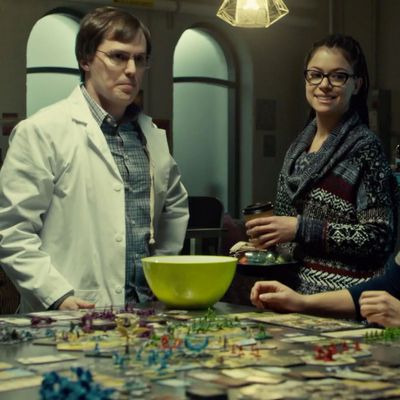
Orphan Black may be the smartest show on television right now. Currently in its fifth and final season, the show, which stars Tatiana Maslany playing more or less every character, explores issues of science, bioethics, agency, and bodily integrity in the framework of a highly credible sci-fi backdrop that revolves around human cloning. It is also, it turns out, the most board-game-friendly TV show since Parks & Recreation introduced the world to The Cones of Dunshire.
The integration of board games into Orphan Black — not just into individual scenes, but into plot threads — is no accident, as co-creator John Fawcett is an avowed board-gamer, and the show itself attracts such an eclectic, intelligent audience that the potential overlap between its viewers and the board-gaming world seems obvious in retrospect. Board-gaming is a hobby for everyone, but it certainly attracts certain types of players — puzzle solvers, math nerds, introverts, and more. (I confess to being all of these things.) Orphan Black has never shied away from its intellectual roots, from its use of a science consultant — the inspiration for the character Cosima — to plot twists built around human attempts to engineer evolution, so seeing board games pop up on the show was only a surprise because it’s something we’ve seen so seldom on dramatic series.
“Orphan Black kind of gathers its audience and has this feeling of collecting ragtag groups of outsiders,” says Fawcett. “Board-gamers are like those people that live in the cracks and crevices. And I’ve been playing and collecting for a lot of years — it’s my other hobby — so I wanted to push for that, to highlight certain games I really loved.”
The introduction of the Rabbit Hole, the comic-book store that serves as a front for Cosima and Scott’s underground lab and/or bunker, allowed Fawcett to pursue the connection even further. “When we were making the shop, board games were more my priority than comic books,” he says. “I worked with our fabulous clearances guy, Jason, who is also a huge board-game fan. It was kind of his project. He loved board-gaming, so I sent him out looking toward different companies and he made all the calls. We got a ton of stuff, everyone was very keen to have their games on our shelf, and we got more stuff than we could actually use. I can’t say that my ulterior motive wasn’t to take home some new board games, but we were trying to represent a lot of different companies, like Wizards on the Coast, Stronghold, Zman, and Fantasy Flight Games.”
I spoke to Fawcett about why he chose to bring his passion for games into the series, and about the six games that have actually reached the table during the series’ run, including two new entries for season five; I also chatted with actor Josh Vokey, who plays the scientist Scott and had to learn to play several of these games for his role on the show.
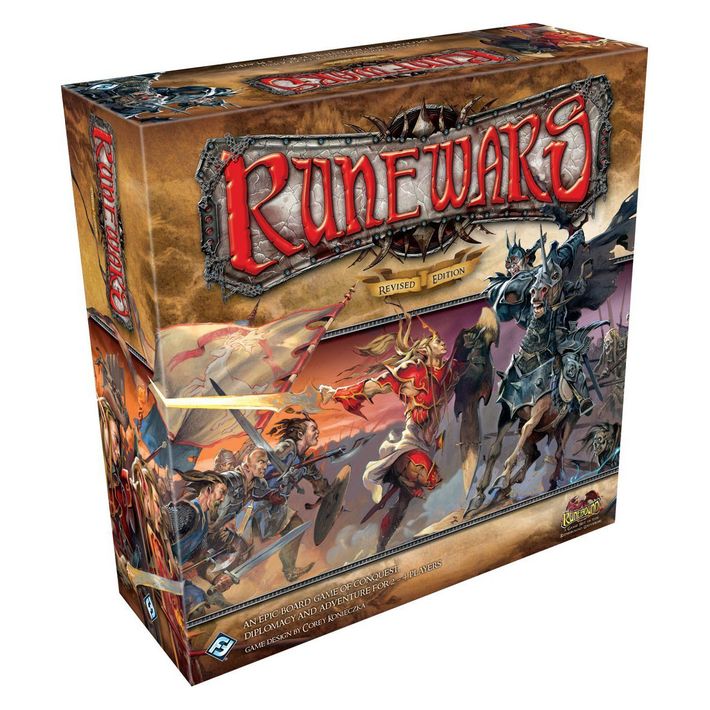
The first board game to appear in the Orphan Black universe was Runewars, which we see some of Cosima’s labmates playing in season two, episode eight, a scene that ends with Cosima cleaning the boys’ clocks at the game. Runewars is a long, heavy board game that combines the fantasy elements of role-playing games with the area control aspect of both modern boardgames like Small World and classic war games. The publisher, Fantasy Flight Games, calls it “epic,” and with good cause.
“I wanted a game that took up table space, had a big wow factor, and looked really complicated,” Fawcett says of the decision to put Runewars in the show. “I like the fantasy element to Runewars — from an initial look, it repped geek board-game culture. We contacted FFG to see if we could use it — they’d already put out the second edition, which doesn’t have the mountains — so I brought my copy of the first edition because I like the 3-D plastic mountains on the board.”
“I also liked it from a story point of view,” he continued. “There’s no possible way that Cosima would know this game, but she blows us away. We realize in that moment, not only does she know that game, but she’s incredibly versed at the game — as the guys at the table get their socks knocked off by this science girl. It added some depth to the character.”
“While Scott is very smart, he’s very linear, and he’s blown away by Cosima because she can improvise,” adds Vokey. “The game drives home the point that she’s the smartest person in the room, and that she’s very good at thinking outside the box.”
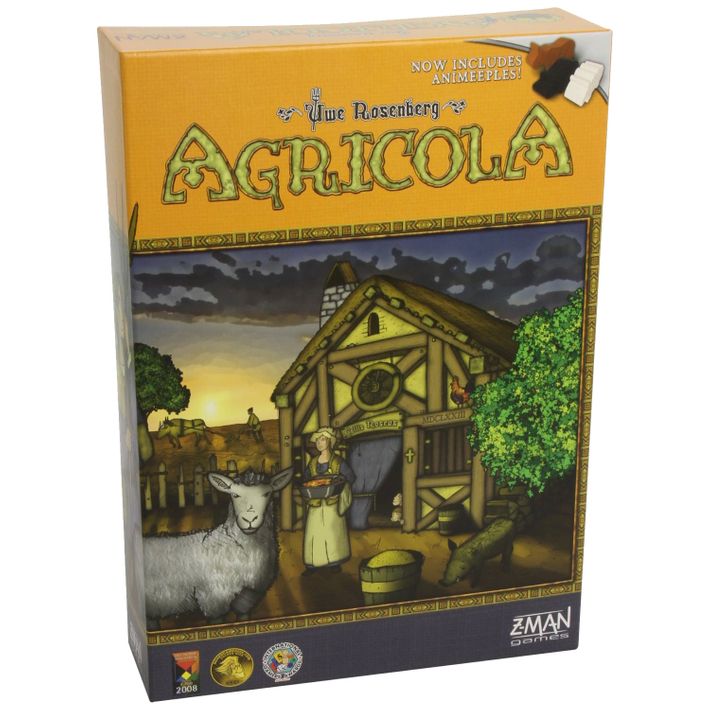
Agricola is the signature title by game designer Uwe Rosenberg, now ten years old and out in a new edition, and it’s the model for many games since then that force players to confront limited resources while placing workers on a central board. Rosenberg himself has gone on to develop similar games like Caverna, Le Havre, and 2016’s A Feast for Odin, which weighs nearly eight pounds. They all share the same theme: gathering resources while trying to avoid losing points for failing to meet certain requirements, like having enough food for all of your family members. (It’s pretty stressful if you think about it too much.)
Scott is the main Agricola player, and introduces Rachel to the game during her rehabilitation — although he later discloses that she cheated while they were playing. “A medieval farming game where you have children and raise cattle seemed very weird” for the show, Fawcett says. “I picked it because it seemed one of the least appropriate things you could play with Rachel Duncan. She would completely abhor it. It’s more like torturing Rachel rather than having fun with her.”
“It becomes like a game of chess between Scott and Rachel,” says Vokey. “They end up trying to eliminate each other, and it ends up in a big double cross. Plus it’s a funny idea, a cutthroat businesswoman doing this agricultural farming game, who’s forced to play it to get what she wants.”
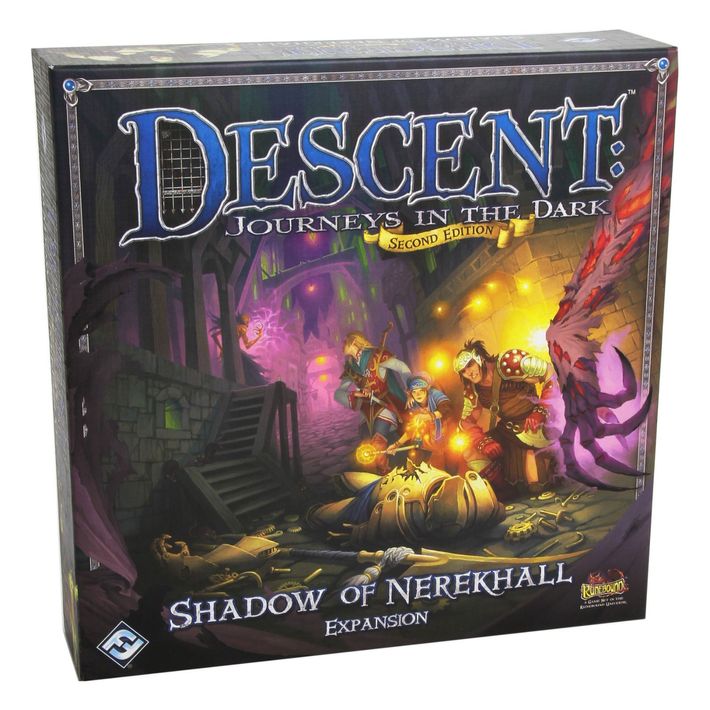
Descent: Journeys in the Dark is also a long, heavy, epic game, similar in theme to Dungeons & Dragons–style role-playing games, but played as a board game, with one player as the Big Foozle villain and the others playing the adventurers exploring dungeons and caves to try to defeat him. The game is now in its second edition, and its mechanics have also been brought to the latest incarnation of DOOM, a 2016 board game release from Fantasy Flight, and the popular Star Wars: Imperial Assault game. All of these games involve “campaigns,” stories that change the board, the setup, and sometimes even the rules, with each campaign taking two to four hours to complete.
Descent appears in season four at the Rabbit Hole, because it’s one of the favorite games of the character Hellwizard, who runs the shop and tries to rope Kira into playing while the grown-ups talk grown-up things in the basement lab. “Here’s one of Hellwizard’s favorite games, but you can see in that scene, it’s going right over Kira’s head, she doesn’t want to play, she’s bored,” says Fawcett. “I like the look of Descent on the table, and it’s a fun game. It’s only been recently overshadowed by Gloomhaven for me.”
Fawcett said none of the actors knew any of these games before they had to play them on set. “You have teach them enough to make them look proficient, give them enough that they look good on camera and it looks authentic when they’re doing it,” he explained. “There wasn’t the time that day to teach all the rules of Descent; instead, you tell them, you do this, you say this, you move your guy here. With Kira she had to just sit there and look sullen.”
Vokey watched videos online of people playing some of the games so he would look more like an experienced player on the screen. “Julian is the guru. He’d set up the games mid-play, and would explain to us all what we were doing on the board,” he says. “He’d explain, ‘This is the way the game works,’ and in the blocking, it would be a conversation, ‘This is where the scene is going’ with the game. He’d work with our props teams to reset it correctly for every take.”
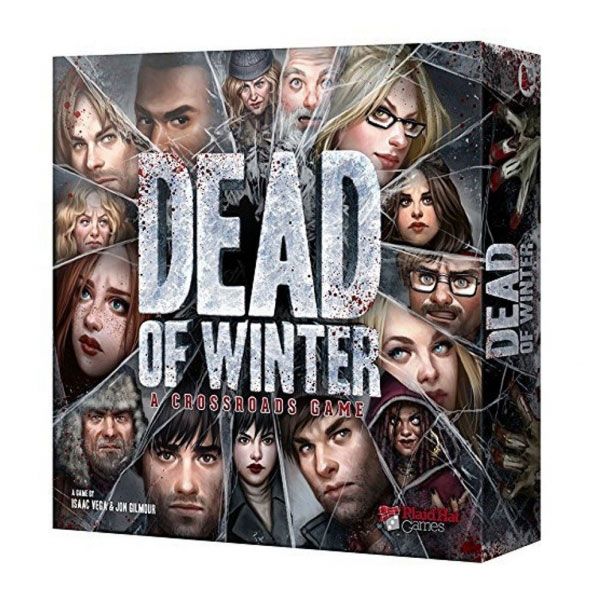
Later in season four, Krystal is introduced to the board-game table with Dead of Winter, a partially cooperative board game — meaning the players all win or lose together — in a zombie-apocalypse setting. It’s massive, with a listed playing time of 45 to 210 minutes and a 20-page rulebook. Fawcett figured it would be the last thing Krystal would want to play.
“I tried to pick a game that seemed like it would be a favorite of Scott and Hellwizard, and it’s the wrong game for Krystal,” he says. “She’s peeved to have to be sitting there with these guys to play this ‘stupid’ board game” in a scene where she’s supposed to be getting some answers about the mysterious things that keep happening to her.
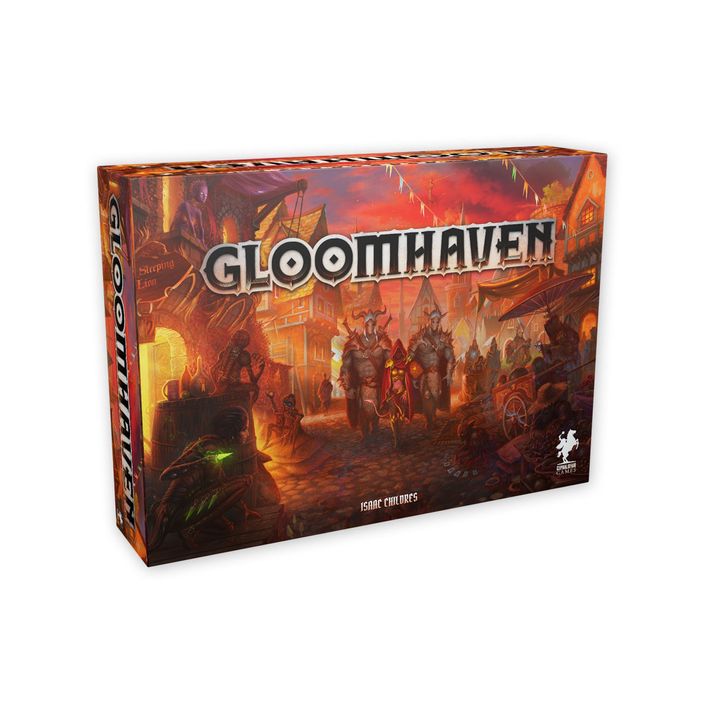
Gloomhaven is one of the hottest new titles of 2017, ranking fourth on Boardgamegeek’s global list of the highest-rated board games (by the site’s users, who tend to favor heavy games) ever published, and the first edition sold out so fast that aftermarket copies are listed online for $200. It’s a “legacy” game, meaning the board and components can change permanently whenever you play the game, combining dungeon exploration, hand management (that is, choosing how and when to use the cards in your hand), and treasure-hunting in a lengthy game with an MSRP of $140. The game appears in season five, and Fawcett says it’s overtaken Descent on his own board-gaming table. But getting it into the show was a big undertaking.
“You couldn’t buy [Gloomhaven] anywhere,” he recalled. “The Kickstarter was over, so we contacted [designer] Isaac Childres, and it all went down very fast. The game showed up the morning we were shooting. I’d never played it or seen it played before. I downloaded all these snapshots of people playing it, but didn’t have time to read the rules. We just had to look at how the board was set up from all these shots on the internet. There are some inaccuracies, but I think it’s pretty close. It was so important to me to get it on the table.”
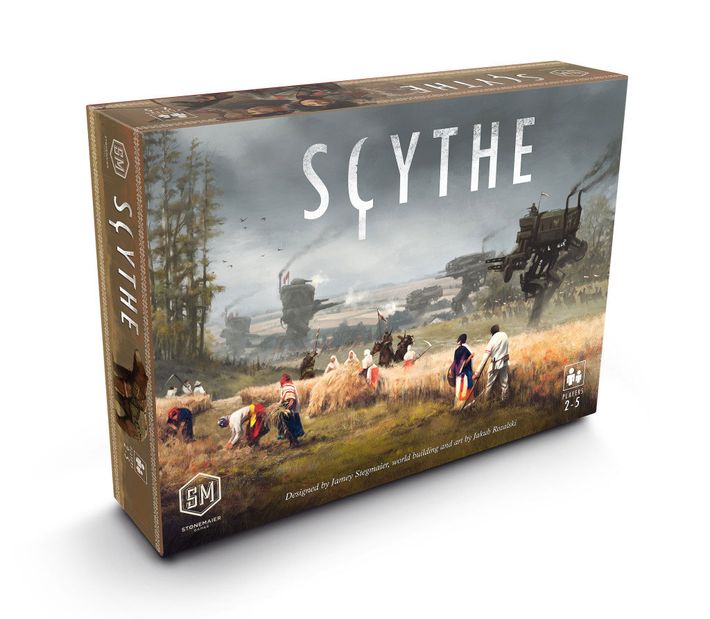
Scythe was the 2016 version of Gloomhaven — a huge commercial hit right out of the chute despite lengthy rules and two-hour game play. It’s more of a traditional Eurogame, described to me once as “Agricola meets a war game,” set in an alternate universe after World War I has left five European powers rushing to fill the vacuum left after “the Factory” has closed. Each player represents one power with specific abilities, begins with different resources, and has a unique goal that s/he keeps hidden from other players. It’s a gamer’s game of “engine building,” with no randomness involved; everything you do early in the game sets you up to do more things later in the game. Scythe appears briefly in season five, although much of its screen time was cut in editing.
“Scythe’s artwork is incredible — I love that game,” said Fawcett. “Unfortunately, in the final edit of that scene, it’s not as featured as I would have liked, but the scene isn’t really about a board game. It’s probably an easter egg for the serious board gamers watching. Scythe’s gameplay is very good and very innovative. I liked it so much I bought all the add-ons. It has a Euro feel, but still has a ‘dudes on the map’ angle, plus it’s got unbelievable artwork and a really cool world that the whole game is set in. Someone put a lot of work into that game. It’s maybe not so fun to watch being played, but it’s a high-strategy, fun game to play.”




